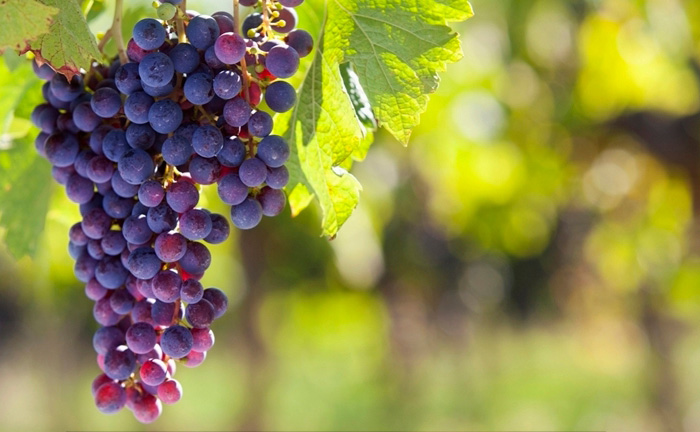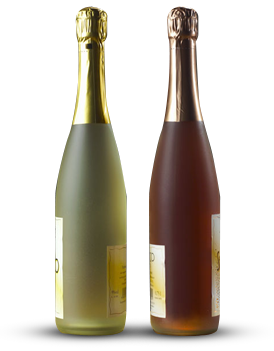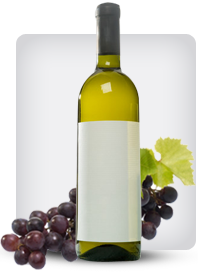

Tag: Wine
Take Resveratrol Supplements Or Simply Keep Sipping Red Wine Instead?
Posted onThe hype about resveratrol supplements are not just due to effective marketing campaign: resveratrol is indeed scientifically proven as the topmost health- and longevity- promoting phytoalexin in the food supplement/antioxidant pharmacology. They are found in red wines (white wines have a small quantity), peanuts, soy, Itadori tea, and Japanese knotweed.
The next question now is whether to take resveratrol in natural form or in capsule supplement form.
Resveratrol do not occur in high concentrations in natural form. You can drink all the red wines you want without damaging your liver or eat soy products to the brim without increasing the resveratrol concentration in your blood. The best way to take just the correct amount of the acclaimed phytoalexin is to take it in capsule form.
The right resveratrol supplements can raise the phytoalexin level in your blood equivalent to drinking 1,000 bottles of fine red wine a day. And, to think that this natural plant antibiotic is found in highest concentration in red wines, you can just imagine how many kilograms of peanuts or soy products you have to eat just to get the right amount of resveratrol.
Don’t be alarmed if the supplement you find in pharmacies and specialty stores are taken from Japanese knotweed also. Japanese knotweed is a perfectly good and economical source of resveratrol in pharmacology business today. In fact, the best supplements sold in the market are from these long-living and seemingly useless weed: looks like weeds have good use after all.
In the same token, you should not totally dismiss eating and drinking natural sources of resveratrol. After all, how else could you explain the famous “French Paradox” if the French are not known to consume the largest quantity of red wines per year? If you’re not French but you still want to take advantage of the many resveratrol benefits, then where to get your dose is clear to you now.
Types of Wine Glasses
Posted onWine glasses come in many shapes and sizes. The structure of the glass is designed to enhance the flavor and aroma of the wine so it is important to choose the right glass for the wine you are drinking. The shape of the glass determines several things: how much surface area is exposed to the air, how much wine can be swilled in the glass, how close your nose can get to the wine, and where the wine falls on your palate as you drink.
If you are drinking champagne for instance, it is proper to use a champagne flute. The champagne flute’s tall, narrow design forces our nose outside of the glass and causes the wine to fall further back on the palate as we tip our head back. In addition to keeping the wine carbonated, the narrow opening at the top of the glass minimizes the surface area that is exposed to the air and keeps the flavor clean and crisp. Since we want to slow oxidization in champagne, there is no need to have a wide bowl for swirling the wine around.
With white wines, a bit more reaction with the air is desirable so the glass is wider and shorter than a champagne flute. A white wine glass is designed to allow a moderate rate of oxidization, enough to release the bouquet of the wine while retaining its crispness. White wine glasses vary as much as the white wines themselves so it cannot be said that there is one standard. In some cases, like with a buttery chardonnay, a wider bowl that you can get your nose into is preferable and may not look like a white wine glass at all. Generally speaking, the crisper the wine is to be kept, that narrower the glass.
Finally, red wine glasses are generally the biggest, having wide bowls and large mouths. These glasses are designed so that a large surface area is exposed to the air and so that the wine can be swilled around to infuse more air while drinking. Some red wine glasses can be quite tall, forcing the wine to sit further down in the glass, keeping the aromas in the glass but the mouth is always wide enough to get your nose in there while taking a sip.
These are the three basic types of glasses and are representative of the spectrum. Between these glasses though there is every size, shape, and style imaginable, each enhancing their own varieties of wine.
What is Resveratrol & Can I Drink More Red Wine?
Posted onWhen I first asked the question, What is Resveratrol I was pleasantly surprised to discover that it’s derived from the skin of a red wine grape. Surely this must just be another angle for red wine lovers around the world to justify their need to consume more of their favorite tipple. That may indeed be the case but now that a number of respected bio scientists and Oprah Winfrey are singing its praises I realized that there may be more to this interestingly named ‘health food’ than meets the eye.
After further investigation I discovered some interesting facts about the consumption of red wine that many of you may not realize. There have been a number of studies to support the theory that moderate consumption of wine cuts death rates by up to 40% per year. I’m sure if you’re a wine lover then you will have been well aware of these claims and happily recite them whenever your spouse questions your occasional over indulgence. Now that they have actually identified and named the component that plays a major part in this theory, it all starts to sound a lot more interesting.
Before you dash out to your local liquor store all this needs to be put into perspective. So far Resveratrol has only been successfully tested on rats, mice and other similar ‘non human’ type characters. I’m not sure how they actually tested the rats but part of me hopes they allowed them to sample at least a small glass of Cab Sav before they started dissecting them. Anyway, it appears that Resveratrol had the effects of lowering the blood sugar, removed brain plaque (don’t ask!), increased cardiovascular function and generally helped to increase their life span.
That’s all very well, I hear you ask, but does this mean that you can now continue to consume vast quantities of the red ‘falling over’ liquid and if challenged by any loved ones play the ‘medicinal purposes’ card? Well, you could always try, you do need to keep in mind though that whilst the Resveratrol component of your consumption may indeed prolong your life, give your more energy and keep your grey matter clear of tooth decay you will still need to survive the missiles and torrents of abuse from your ever loving spouse.
Hopefully this has provided you with a better understanding of how Resveratrol can improve your live (and relationships!), for those that need more to ‘quench their thirst’ this link will provide you with more handy information.
Find More Red Wine Articles
Wine Making and Tasting
Posted onIn your search for wine making recipes online, you will encounter a variety of interesting recipes from which to choose; there are standard ones for beginners, variations from the classics, innovative ones that are exciting to make, and there are the organic recipes to keep you fit and healthy.
With a jug of water, some yeast and pectic enzyme, some sugar, and other flavorings, there are many homemade wine making recipes you can experiment with. You can make wine from your favorite fruits like your all-time favorite grapes and strawberries as well as apples, apricots, peaches, bananas, pineapples, and all sorts of berries. You can also make them from nuts like almonds and hazelnuts. You can try roses, lilac, and dandelions, too. There is a world of wine making recipes out there, and they’re just a click away.
To say a wine is sound and round or well-rounded, means it is well-balanced. Smooth means that the wine is just right, while sharp and rough mean that the wine is imbalanced a bit strong and falling between sour and tart in terms of acidity. Silky means that the wine is fine and balanced. In essence, wine has three basic components: Fruit, acidity, and tannin. To make a good wine, these three components must be in balance, not overwhelming.
There are variations in taste, such as soft in contrast to hard and light in contrast to heavy referring to tannins. Based on its flavor, a wine might be described as nutty or earthy. It would be unfavorable and faulty if it were said to be mousy, musty, moldy, or faded. As the names imply, Yuck!
A wine’s dosage means the amount of sugar added to wine, especially to sparkling wine. Thus, derive the terms sweet and dry and the semi’s in between. Cloying, on the other hand, suggests that the wine is too sweet for comfort.
As a whole, a wine should have a finish that is pleasant just as you swallow, and an aftertaste that is likewise pleasant after you swallow the wine and it lingers inside your mouth.
Aroma is how a young wine smells. Green is what it tastes like. Clean is when you have no complaints, and herbaceous is as grassy and organic as they get. Thin is when the wine is bland, and hot is when wine really burns. It’s for fire-breathing dragons and not for you.
But the most important ingredients of all, you find inside yourself. Wine making involves a passionate desire to learn. It entails patience and discipline. It takes time. You ferment, blend, and age along with it, with grace. It takes a real love for wine, be it white or red, sweet or dry, crackling or sparkling, local or foreign.
They say the best way to know wine is to drink some and enjoy some. Get to know the experience of it. Appreciate the nuances of each unique kind and brand. Wine can be very much a part of every dining experience and many celebrations in our lifetime.
There are many good wine recipes and every recipe can be extraordinary.
Related Malbec Wine Articles
Wine Tasting For the Novice
Posted onWhen it comes to wine appreciation, there’s so much involved. From wine flavors to aromas to tasting to educational information, it all contributes to the fun you have drinking it, right? No matter where you drink your wine-whether it be a winery, a dinner party, or your own living room-knowing how to taste your wine adds flavors and aromas you may have never enjoyed had you not tried it. If you aren’t sure how to best taste your wine, as opposed to just swig it like a beer-don’t worry, this article’s got you covered. Here’s all you need to know in order to conduct a simple wine tasting for social and your own purposes.
Color- First, when conducting a wine tasting, you want to check out the color. Aside from it being red or white, what shade is it? If it’s a white wine, it can be light yellow, light green, brown, amber, or clear. Depending on the color, you will find a quite a range of taste and aroma.
Opacity- Next, examine how clear it is- in the light. Look closely at your white or red wine to discover translucent or opaque it is dark or light, etc. Moreover, it’s always good to check for cork bits and sediment, as both of these factors will definitely affect your wine experience.
Swirl- It’s what you have all been waiting for: the classic wine swirl. Here it is. Why do people swirl their wine other than looking pretty sophisticated doing it? Because it releases more aroma, and this will take you more fluidly to your next step: smelling your wine.
Smell- Ok, so now that you have swirled your wine and released more aroma by doing so, if you want you can swirl it again-many enthusiasts do. Once you have refreshed its aroma, smell your wine by sniffing lightly over the glass.
Now, Really Smell- Now, that you got a first impression of the wine, take a deeper smell by putting your nose into the glass of wine. Inhale through your nose with your mouth closed. This is typically where a wine enthusiast will say something like, “my, doesn’t that have an oaky aroma?” or something to that effect, but you may or may not recognize an aroma if you are new to wine tasting and haven’t sniffed enough wines. What you are looking for is basically one of a few aromas: oak, vanilla, citrus, floral, or berry scents. If you don’t get it on the first try, certainly try swirling and smelling again.
Taste- Yes, it takes six steps in the average wine tasting to get to actually drink your wine, but if you are doing it properly, it should be well worth it. How do you taste it properly? Take a small sip and introduce it to your taste buds or palate. You should be able to pick up tannin amount, acidity, sugar, and alcohol content. As the wine approaches the middle of your palate, you should be able to pick up which flavors are involved. Then, once swallowed, consider the aftertaste, and how it affected your overall wine experience.
More Merlot Wine Articles
popular posts
-

How to Decant Merlot Properly: A Guide to Unlocking Its Full Potential Merlot, with its plush texture and approachable profile of plum, cherry, and chocolate notes, is one of the world’s most beloved red wines
12-22 2025While often enjoyed straight from the bottle, taking the time to decant a Merlot can dramatically elevate the experience. Decanting serves two primary purposes: Read More
-

Pinot Noir Wine Subscription Reviews: A Curated Journey for the Discerning Palate For wine enthusiasts, few grapes inspire as much devotion and discussion as Pinot Noir
12-21 2025Celebrated for its elegance, aromatic complexity, and remarkable ability to express *terroir*, Pinot Noir can be both thrilling and intimidating to explore. This is Read More

